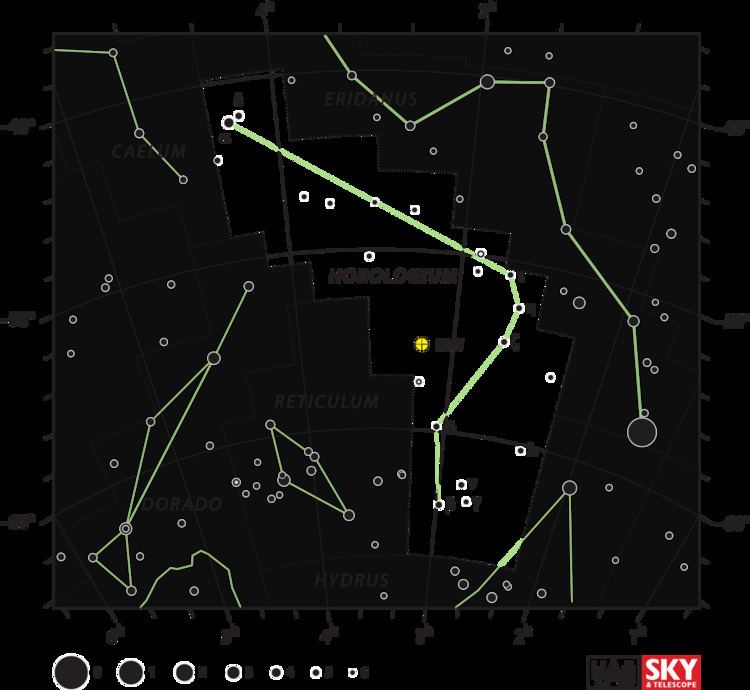Magnitude 5.26 | ||
 | ||
People also search for Lambda Horologii, Gamma Horologii | ||
Elite dangerous nu horologii system
Nu Horologii (ν Horologii, ν Hor) is the Bayer designation for a single star in the southern constellation of Horologium. It was catalogued by the Dutch explorer Frederick de Houtman in 1603. With an apparent visual magnitude of 5.3, this star can be seen with the naked eye from the southern hemisphere. (According to the Bortle scale, it can be seen at night from bright suburban skies.) Based upon parallax measurements made by the Hipparcos spacecraft, Nu Horologii lies at a distance of about 165 light years from the Earth.
The stellar classification of A2 V indicates that it is an A-type main sequence star that is generating energy through thermonuclear fusion of hydrogen into helium at its core. Nu Horologii is larger and hotter than the Sun, with 190% of the Sun's mass, 188% of the radius of the Sun, and it shines with 16.7 times the solar luminosity. This is a young star with an estimated age of 540 million years, and it is spinning rapidly with a projected rotational velocity of 144 km/s along the equator. The effective temperature of the photosphere is 8,308 K, giving it the white-hued glow of an A-type star.
No orbiting companions down to the mass of a brown dwarf have been discovered within a radius of 150 AU of Nu Horologii. However, it is emitting an infrared excess that suggests it is being orbited by a debris disk of dust particles. The mean temperature of this disk is 56 K and it appears to have two components: an inner disk is orbiting at a distance of 7013143613955872000♠96+9
−37 AU, while an outer disk lies 7013613351269870000♠410+24
−96 AU from the star. The estimated mass of the disks is 6997130000000000000♠(1.3±0.7)×10−3 times the mass of the Earth. The disks may be viewed edge on, which limits the amount of detail that can be discerned.
Based upon their respective motions through space, ν Horologii had a close encounter with the star Alpha Fornacis some 351,200 years ago. The two stars came within 7015249939884098842♠0.081+0.6250
−0.0488 pc of each other; close enough to disrupt their respective (hypothetical) Oort clouds. Potentially, the interaction may have produced asymmetries in the Nu Horologii debris disk, and could cause comet showers that increase the dust content. However, it is unlikely that the encounter was the cause of the disk itself.
